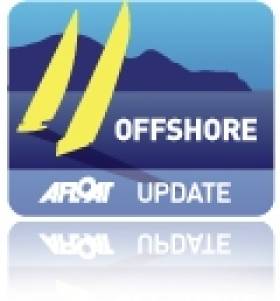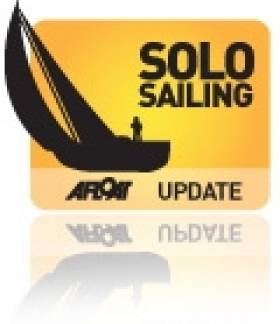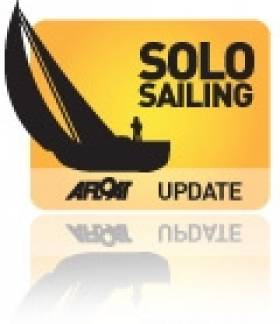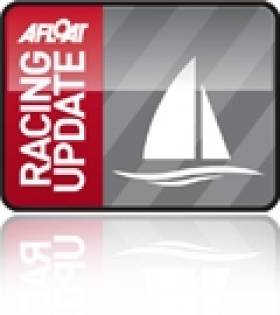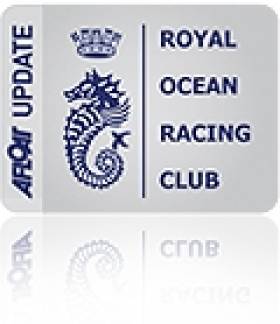Displaying items by tag: Offshore
2011 ISORA Scoring and Race Programme Up for Debate
The first is a proposed race schedule for 2011. Due to the number of races and the large variation in the distance and complexity, Ryan is proposing to identify some of the main races as those that qualify for the Overall ISORA Series - "The Wolf's Head Trophy". The other races will qualify for another lesser series that involves all races. Trophies and prizes will be awarded for all races irrespective of status.
The second issue is the proposed use of the High Score system and incorporating a difficulty coefficient to reflect the type of race involved. The use of the high scoring system will also be preferable when dealing with a series where many boats will not do most of the races and the variation in the fleet numbers can be significant.
Stephen Tudor of PSC has used the results from 2010 to illustrate the proposed system and these are attached below. Unfortunately (or fortunately) in the example the places of the top boats are generally unaltered but this is due to the fact that the top boats did most or all the races.
Ryan also says he has contacted RORC and they have agreed in principle to accept any ISORA race of over 75 miles and incorporating a night passage as a qualifier for next year's Fastnet Race.
The main purpose of the exercise is to encourage boats to do as many of the races as possible but not the penalise them too much for races missed. It is also to reward those boats more that win in large fleets over a win in a smaller fleets. Day races will be used to encourage and entice more new entries to ISORA in 2011.
The Race Schedule and Scoring System will be agreed at the AGM.
Five Start 'Five Oceans' Round the World Race
And they're off! With the sun shining brightly and a fresh breeze blowing, the five international skippers in the Velux 5 Oceans blasted across the start line beginning a 30,000-mile adventure around the globe.
It was the start of an epic voyage for the ocean racers, during which they will sail their 60ft Eco 60 yachts across five oceans through some of the best – and worst – conditions known to man. Thousands of people flocked to the 5 OCEANS race village in La Rochelle, France, to watch the brave men depart on their adventure.
Crowds packed the race village and lined the walls surrounding the Bassin des Chalutiers to watch the emotional goodbyes as the skippers said farewell to their family and friends. Following a moving departure ceremony held on the steps of the VELUX House the five impressive Eco 60s left the dockside at 1pm to rapturous applause.
More than 400 spectator boats carrying thousands of fans, friends and family of the skippers and media accompanied the fleet out to the start area. A host of special guests were among the spectators including Maxime Bono, the Deputy Mayor of La Rochelle, and Jack Dillenbourg, the Mayor of Sport for La Rochelle. Race veterans including Isabelle Autissier, Jean Luc Van Den Heede, Thierry Dubois and Bernard Stamm as well as round the world sailor Nick Moloney joined race chairman Sir Robin Knox-Johnston to watch the action from the water.
After months of build-up, the starting gun finally sounded at 4pm and the four-yearly race, known as The Ultimate Solo Challenge, began. The 2010/11 edition of the race is the eighth its 28-year history. Polish ocean racer Zbigniew 'Gutek' Gutkowski showed his aggressive style of racing honed during years of top level dinghy racing hitting the start line right as the starting gun fired. Although Gutek's yacht Operon Racing is the oldest boat in the fleet, it is a previous Vendée Globe winner and he led the fleet to the first mark, south east of the Ile de Ré.
American sailor Brad Van Liew crossed the line in second place and chased hard, overtaking Gutek after the first mark. Brad has already completed the VELUX 5 OCEANS twice, winning class two of the race in 2002. His yacht Le Pingouin also has a claim to fame, built by legendary French solo sailor Catherine Chabaud for the 1998 edition of the Vendée Globe.
Canadian Derek Hatfield, Belgian Christophe Bullens and Briton Chris Stanmore-Major regularly swapped places as they raced into the Bay of Biscay. However places are irrelevant at such an early stage of the race – the sailors have more than 7,000 nautical miles to go before they reach the first stopover in Cape Town, South Africa.
Christophe Bullens will sail a 48-hour qualification passage before returning to La Rochelle to carry out final preparations for the race. He already qualified in his yacht Five Oceans of Smiles but she was cruelly dismasted en route to La Rochelle three weeks before the race start. Christophe's team worked tirelessly to find another Eco 60 to race on and with just days to go he acquired Artech 60, now renamed Five Oceans of Smiles too. Christophe is expected to set sail again from La Rochelle on Thursday.
The VELUX 5 OCEANS, run by Clipper Ventures PLC, is the longest running solo round the world race, and has 28 years of rich heritage as the BOC Challenge and then the Around Alone. This edition features five ocean sprints over nine months. After heading from La Rochelle to Cape Town, the race will then take in Wellington in New Zealand, Salvador in Brazil and Charleston in the US before returning back across the Atlantic to France.
Follow all the action at www.velux5oceans.com.
First UK Offshore Sailing Academy Squad Selected
From an original list of over 50 applicants, those who made it to the shortlist were put through a grueling mental and physical selection process. They were pushed well beyond their comfort zones with nine ultimately chosen to be part of the Development Squad:
• Oliver Bond (30, Southampton)
• Nick Cherry (25, Birmingham/Southampton)
• Sam Goodchild (20, Southampton)
• Simon Hiscocks (37, Surrey/Portland)
• Nick Houchin (26, Tadley, Hampshire)
• Nigel King (41, Lymington)
• Becky Scott (24, Scotland/Fleet)
• Phil Sharp (29, Jersey)
• Oliver Young (22, Saltash)
As part of the Squad, they will begin a winter-long programme where they will develop the skills needed to perform as a world class offshore sailor. The Academy will be based from the Weymouth and Portland National Sailing Academy until the end of November when they will relocate to La Grande Motte Figaro School (CEM). From here CEM Director Franck Citeau will manage a full programme for the sailors through to the end of March. At that point one of the Squad will be selected for the scholarship which will enable them to race in the 2011 French Figaro circuit in one of the Artemis Figaro boats. The remaining Squad will continue to train and take part in a series of races throughout 2011, including Royal Ocean Racing Club's most famous race the Rolex Fastnet Race, and the Tour du Bretagne at the end of September.
The group will be bolstered by two associate members, 36 year old Pip Hare (Felixstowe) and 37 year old Conrad Humphreys (Plymouth) who, instead of being provided with equipment and costs, will bring their own campaign to train with the Academy. As the project develops, the aim is that more people will move on from the Development Squad to become associate members and keep training with the Academy.
Sailors will remain in the Development Squad for as long as they are attaining pre-agreed training goals. The aim is to allow sailors the time in the Figaro boats to develop their skills before moving into other classes or finding their own funding for a campaign. Further selections to top up the squad will be held in April and September 2011.
Conrad Humphreys commented: "When the Artemis Offshore Academy was announced earlier this year, I immediately thought it was not only a great idea but also the missing link for UK aspiring and seasoned solo sailors. No one would argue that when compared to our French counterparts, we simply do not do enough collaborative training or development in between the major events. The Figaro championship is one of the best programmes for short-handed development and there is no secret to the fact that every Vendée Globe winner maintains close links with the class. I hope the Artemis Offshore Academy will become a place to nurture new talent and provide Associate sailors like myself with support to compete at the top level. I will be looking for a sponsor to do the Solitaire du Figaro in 2011 and the Transat in 2012 and I look forward to working with the rest of the squad over the coming 12 months."
Simon Hiscocks commented: "The British success in the Olympics is a direct result of a very long programme that the RYA has run right from the grass roots getting people learning to sail up to winning Olympic gold medals. And that whole thing has a massive structure behind it - you name it they are on it. Hopefully we can transfer that success into this field through this programme. The Artemis Offshore Academy opens up a whole new world of opportunities, not least of which is potentially being able to do the Vendée Globe, and I am really excited to be part of it."
John Thorn, Artemis Offshore Academy Performance Director commented:
"From their application and CVs, we knew we had the sailors. It was then more a question of trying to identify some of the other traits that we felt were an important part of success in short sailing and offshore sailing. There were lots of elements that we were looking for.
The nine development squad members that we have chosen have got tremendous potential – and we looked at that potential over short, medium and long term. But they are experienced sailors, they are technical competent sailors and they have the desire to win.
We will identify what the sailors need and we will deliver that, using the best coaches, the best venues, the best resources we can. We'll give them everything they need in order to be successful.
I am tremendously optimistic and truly believe, because we are building a foundation for long term success, that we will see an Artemis Offshore Academy sailor on the podium for the Vendée Globe. It is an incredibly exciting time and this is just the beginning."
Ireland Tackle Offshore Race to Take Commanding Lead
Boats were returning to Cowes Yacht Haven throughout yesterday, back from the offshore race of the 2010 Rolex Commodores' Cup. With a 2.5x point co-efficient this race had the potential to provide a major upset in the results, but after four days of competition the Irish team hold an even more commanding lead, now up to 29.5 points. Hong Kong has regained second place, this time with a 25-point cushion over the leading French team, which in turn is just 5 points ahead of GBR Red and 15 points ahead of France Yellow in fifth.
Dave Dwyer’s marinerscove.ie was overall winner of Class 2 while team captain Anthony O’Leary’s Antix scored second place. Rob Davies Roxy 6 skippered by Andrew Creighton was fourth in Class 3.
“We’re feeling quite positive as we’ve just had one of the best offshore results ever – the lads all worked their socks off,” commented Barry Rose, Commodore of ICRA. “We’ve strengthened our lead so we’re in a good, solid position and looking forward to the rest of the regatta.”
The team had all returned to Cowes by mid-afternoon to prepare the three boats for tomorrow’s (Thursday) Rolex Trophy race on a long-inshore race that is expected to last three hours. Friday will also feature a single race as the fleet competes for bonus points in the Round Isle of Wight course.
Saturday’s single race finale counts for double-points and strong challenges from Hong Kong, France Blue and Britain’s GBR Red are expected.
“Its still all to play for. Hong Kong are looking very strong and there are a lot of points still to be earned,” cautioned Rose. “There’ll be no change in our strategy – we have a plan and we’re going to stick to it. Its about grind out the results day by day.”
Hong Kong and Ireland scored equal points in the offshore race with the former's Rockall III winning the small boat class while the latter's marinerscove.ie claimed the mid-sized class.
On the water Rockall III was first home in the whole fleet, crossing the line just to the west of the entrance to Portsmouth Harbour at 10:40:41 BST, winning her class by almost one hour on corrected time. While racing for Hong Kong, where he used to live, Rockall III's owner Christopher Opielok is German. His crew is largely from Hong Kong but also includes two Dutch, one Irishman and three Australians. According to Opielok he bought his Corby 36 specifically to compete in the Rolex Commodores' Cup, "we have been preparing for this for a long time. The boat clocked since delivery to us last year, 4,000 miles. We did a lot of offshore racing. We have four very good helmsmen. The navigation was very well prepared. We had a good tactician and I believe altogether with a very good boat, ended up with this result."
Opielok said they faced stiff competition from the Irish team's small boat, Roxy 6, "we focussed on sail trim and sailed extremely hard without any rest. We knew we could only beat Roxy upwind. We put all our effort into the 60-mile beat and then we tried to control them downwind. Luckily the tide went with us and pushed us even further than expected." The tide was particularly beneficial on the final run into the finish.
Simon Henning, owner of the Alice II from GBR White was delighted to have won the big boat division. His Farr 45, the biggest yacht in this year's Rolex Commodores' Cup does not have a favourable rating and they have not performed well in the inshore racing so far. Having to continue past Anvil Point and on to the East Shambles mark in Weymouth Bay, the Class 1 course at 191-nautical-miles was some 35 nm longer than the Class 3 version, which simply did an about-turn at Poole. Yet Alice II reached the finish line just under four minutes astern of Rockall III.
Alice led the 30-boat fleet out of the Solent in the strongest conditions of the race and enjoyed a fantastic blast down to the Owers, the easternmost mark of the course, to the southeast of Selsey Bill. "We saw 24-25 knots [of wind] and we were surfing up to 17 several times – it was lovely," commented Henning. Thanks to this they caught the tide turning at the Owers and from there never looked back. Despite the wind dropping to five knots this morning, they claimed the big boat class by a margin of 1 hour 20 minutes on corrected time.
Aside from torrential rain yesterday afternoon, conditions were not as bad as had been forecast. In the southwesterly breeze the sea was being kicked up by the wind-against-tide on the first beat out of The Solent and apart from the overfalls off St Catherine's Point, the southern tip of the Isle of Wight, it was generally considered a pleasant race.
"It was great fun - the course had a fabulous variety," commented Anthony O'Leary, who's Ker 39 Antix corrected out to be second amongst the big boats. "Every corner we went around it seemed that the tide was against us, but that was part of plan to give us a varied course with all the options and all the challenges - and there were plenty. Going into Poole Bar in the middle of the night and the Anvil in the dark is a challenge but thankfully we got away and managed to hold the thing together."
O'Leary was thankful that the Irish team had cumulatively posted a solid result in this high scoring race. "You could easily lose the regatta if you had a disaster and in that respect it is certainly satisfying. But there is still plenty to do and there are still plenty of points available. We'll keep on chipping away."
David Dwyer's marinerscove.ie maintained the impeccable Irish performance, first home in the mid-sized class, although by the slender margin of three and a half minutes over Anthony Day's Blondie IV. Tactician on the Irish boat, Andy Beadsworth, commented that, "it was a really good race and it was nice to finish relatively early today." The team enjoyed spending most of the night racing in company with the big boats. "It wasn't that lumpy. We hardly had any water over the deck!" said Beadsworth, adding that he had tried to get some sleep only to be awoken when he overheard the rest of the crew about to make decisions on deck.
Finishing behind Rockall III in the small boat class was Bernard Moureau's JND 35 Gaia in France White. Tactician Alex Mercier said that they are improving with every race aboard their new boat. "The start was a bit improvised but we were able to place ourselves well and to maintain a good position during the entire night and this morning as well." They are still discovering Gaia but have found it goes well under spinnaker.
Behind them in third was Jim Macgregor's Elan 410 Premier Flair, which posted the best result for GBR Red, with another crew who had thought they would perform better inshore than off. The line-up includes British Olympic-squad 470 sailor Ben Saxton as tactician. "It was long but enjoyable, different. It was nice weather because it was windy enough and we made good progress and we finished close to other boats so that kept it fun the whole way around," said Saxton who admits he only slept for about five minutes. Saxton reckons they made their biggest tactical gains with the tide on the beat up to Poole.
Tomorrow the Rolex Commodores' Cup returns to racing on The Solent with one inshore course scheduled for Rolex Trophy Day. Crews get a well-earned rest following their efforts of the past 24 hours or so, with the start scheduled for noon BST. With two high scoring races to follow on Friday (the x1.5 Round the Isle of Wight Race) and Saturday (a double-points inshore race) the teams at the top know this event is far from over. The Irish will sleep more comfortably tonight having cruised through the major test of the week, but undoubtedly will be on alert tomorrow to avoid the pitfalls encountered by previous compatriot teams.
Top Five Teams - Provisional Positions after completion of 5 races
Team / Points / Place
Ireland / 42 / 1
Hong Kong / 71.5 / 2
France Blue / 84 / 3
GBR Red / 89 / 4
France Yellow /99 / 5
Offshore Race: First Boats Due Home at 11am (Podcast Here!)
Ireland has performed strongly in the decisive offshore race in the Commodores' Cup. The first boats are expected back by 11am. ICRA Commodore Barry Rose gives a 9am dockside podcast update below but it's 'no comment' from Team Ireland on the penalty imposed on GBR Red's Quokka 8.
The World's Smallest Circumnavigation
Most of the news at the moment, save the Round-the-World antics of the Clipper fleet, is small boat stuff, close to shore. But there's one story drawing to a close that mixes both. Franco-Italian sailor Alessandro DiBenedetto is nearing completino of his solo, unassisted non-stop circumnavigation in a customised Mini Transat boat. He left Les Sables D'Olonne in November last year and is just shy of 1,000 miles from home, parallel with the coast of Portugal.
Like a true Frenchman he somehow has a herb garden on board his 21-foot boat, and his missive from yesterday, having caught a bream with a crossbow, read: 'Meanwhile, at noon, sea bream filets with olive oil, parsley from the garden and freeze-dried vegetables'.
Di Bennedetto's website is HERE, and while the updates are brief, they give a good insight into the mind of a single-minded, food-obsessed solo sailor.
Some gems:
Tuesday, June 29th, 2010
No wind for 48 hours. Dolphins keep me company
Wednesday 9 June
Alessandro has lengthened the bowsprit.
Sunday, April 18th, 2010 09:38 pm
To celebrate my passage round the Cape Horn this evening it is a party on board: Champagne very freshly, with "foie gras" and pastas with mushrooms and cream!
Monday, March 22, 2010 02:15 am
Beautiful sunshine these days in the vastness of the Pacific Ocean. Not a single ship in sight from the South Atlantic ... Even the birds are rare. Sometimes a solitary albatross comes to visit me. The nearest point of earth is: Easter Island 1000 miles farther north.
Keel-Hauled but Omani Show Goes On
After a fine start in the Tour de France á la Voile, Oman Sail-Renaissance were lying in third place prior to the first offshore leg to Calais, however there were dramatic scenes at the start of the 25 mile race, as skipper Rob Greenhalgh explains.
“Unfortunately, shortly after the start we hit a sand back and got stuck aground for about six minutes as we watched the fleet sail away. Eventually, we got free but we then hit the top of an unmarked wreck, coming to a grinding halt from a boat speed of about seven knots! We knew we had damage, we could see some of it internally, but we were not taking in water and pressed on. The boat speed was still impressive and we managed to pull ourselves back up to 10th, as we crossed the finish line in Calais.
"Getting the boat repaired was a big job, the whole team was up all night, everybody dug in deep and that was a big plus from the incident. Great solidarity, everybody was resolved to get the job done. The organisers are happy with our repair and although we have had to take a penalty for working on the boat, we are back in the race and determined as ever. Today, we have three inshore races. It looks like we will be in 12-16 knots, good wind conditions for us.
"Everybody makes mistakes and yesterday was a true test of the spirit in this team. What doesn’t break you makes you stronger. Today, Oman Sail Renaissance is still very much in this race and the team spirit is even stronger. Yesterday is just part of this great adventure."
The Tour de France à la Voile is a true offshore racing school for newcomers measuring up to the sailors of the pro series. Oman Sail Renaissance is a Farr30 on the 2010 Tour with five Omani sailors alongside 5 other European sailors, led by skipper, Rob Greenhalgh.
10 ports are visited along the French coast. The 'Tour' is a tough race taking a month to complete, their is a huge variety of racing. Playing the tides in the English Channel, extreme conditions surfing downwind in the Atlantic Ocean, the fickle winds of the Mediterranean require a huge range of skills from the crew. There is a fantastic atmosphere at the ports of call but make no mistake, the Tour is a real test of skill, endurance and determination.
“The Tour is the opportunity to discover crewed offshore racing” emphasises Nicolas Honor, Project manager of the Oman Sail team for the Tour. “It is the only deep-sea project that allows five Omani sailors to sail with the best of the series and to train in the throes of the action. After the experience of one month around the french coasts, they will be able to bring their experience back to Oman to benefit the students of the sailing schools in Oman who will soon sail on the Farr30, once the 2010 Tour is over.”
Biggest fleet of the Year Bound for St. Malo
The 164 mile race to St. Malo from Cowes has always been popular and with 123 boats already in, it is the biggest entry for a RORC offshore race so far this season. Unfortunately a glance at the entry list reveals there are no Irish entires to date but the size of this fleet reflects the potential Interest in offshore sailing, a shot in the arm for organisers of Irish offshore fixtures if UK and French fleets are targeted.
Mike Slade's Farr 100 Maxi, ICAP Leopard, will be hot favourite for line honours for this weekend's race to St. Malo and make no mistake; the world record breaking yacht will be attempting to break their own course record, set in 2008.
"We have held the record in four different boats, Ocean Leopard took about 19 hours, in Longabarda we took about 16 hours, Leopard of London about 15 hours and racing ICAP Leopard we got it down to about 11 hours. We will be hoping to get a good westerly wind so that we can lay the Casquets and then charge off towards St.Malo under spinnaker.
I have been doing this race for about 20 years and we are running out of restaurants that will have us! Hopefully we will be in by Saturday morning and have an enormous celebration!" commented Mike Slade.
There are sixteen RORC trophies up for grabs and there will be some intense battles right through the fleet. Four Class 40s will also be racing including World Champion, Concise, skippered by young aspiring yachtsman Tom Gall.
No less than nine A 35s will undoubtedly be swapping tacks throughout the race, including French Rolex Commodores' Cup representative, Marc Alperovitch and Jerome Huillard's, Prime Time. However, last year's IRC Two winners Franck-Yves Esco-Voiles' A 35, Ame-Hasle, will certainly be looking to retain the Yacht Club de Dinard Trophy.
Twenty six Beneteau yachts will be racing, many from France but also making the trip to St. Malo is RORC Commodore Andrew McIrvine, who will be racing his First 40, La Réponse, against three other sister ships.
Andrew McIrvine commented: "La Réponse is a new boat and a new design, so we are getting used to it and the new sails, there are a lot of tweaks to be done but we are learning more every race. It is the first boat that I have had with a fridge which is a bit of a novelty for me! So far we are pretty happy with the boat speed but there is more to come, I am sure."
Hugues Riché's Grand Soleil 44R, Spineck, was the overall winner of the prestigious King Edward VII Cup for best yacht overall in IRC. Riché has strong associations with the Yacht Club de France and after winning last year, he let the Club put the Cup on display. Spineck is back again this year and will be highly motivated to retain it.
Cowes – Dinard – St Malo Race
Organised by the Royal Ocean Racing Club in association with UNCL, Yacht Club de Dinard, Société Nautique de la Baie de St. Malo and the Royal Yacht Squadron.
Start: Friday 2nd July from the RYS, to the West.
First warning signal: 1450
Course: Cowes – Casquets - Les Hanois – St Malo. Approx. 164 miles.
Full details including on-line entry at www.rorc.org
Teen Solo Sailor Dismasted in Indian Ocean
Teen solo sailor Abby Sunderland has been located alive and well, but dismasted, in the middle of the Indian Ocean. Sunderland was dismasted in heavy weather 2,000 miles east of Madagascar and 2,000 miles west of Australia.
Communications were lost with the 16-year-old as she sailed in heavy weather on Thursday. Her EPIRB went off just hours after her parents last spoke to her from California. Sunderland's emergency signal sparked emergency callouts from Australia and the French island of Reunion, and she was located in the early hours of this morning by a chartered Airbus A330 that set off from Australia to search the area of the EPIRB this morning, arriving on site at first light.
Sunderland was attempting to wrest the title of youngest solo circumnavigator from Jessica Watson, who finished her round-the-world voyage in Sydney last month. The previous record holder was Sunderland's older brother.
The title of youngest circumnavigator has raised serious questions in recent years. A young Dutch sailor, whose parents were keen for her to challenge for the title, were prevented from letting her do so by a children's court in Holland.
New Offshore Race Around Rockall
A new offshore race will set a fleet of boats on a sprint to Rockall, a lonely rock around 270 miles north-west of Donegal. The 750-mile race will be timed to coincide with the arrival of boats in the Volvo Ocean Race in Galway. The Round Rockall Race is the brainchild of Larry Hynes, who sailed around Ireland solo in 2005.
"We originally wanted to do it last in 2011," he said, "which was the 200th anniversary of the first landing on Rockall."
However, Hynes said that when he heard the VOR was coming back to Galway, it made sense to postpone the event to make it more palatable to travelling boats from France and elsewhere.
Hynes says he wants to keep the race 'fairly Corinthian' and is welcoming all comers. With Galway being twinned with Lorient in France, Hynes hopes to tap into the offshore sailing spirit of the French and tempt some French offshore boats north with the Volvo Ocean Race Fleet for the finish and a race in Irish waters.
The site already has a web presence, which puts many of the more established races to shame. He is working with former Round Ireland winner Aodhan Fitzgerald on a Notice of Race and says that he is steadfastly committed to running the event, whether he gets two or two hundred entries.
The Round Rockall website is at www.roundrockallrace.com



























